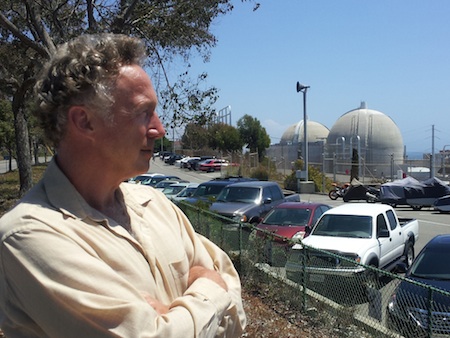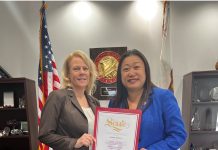
Urged by concerned residents to put some power behind their position, Laguna Beach’s City Council Tuesday toughened up their wording and unanimously supported a resolution calling for shutting down the San Onofre Nuclear Power Station south of San Clemente. Council member Kelly Boyd was absent.
The decision preceded two mild earthquakes centered in Yorba Linda that shook south Orange County. The power plant sits near the Oceanside fault line and new quake studies are planned to begin in November, according to Scripps Institution of Oceanography, which is conducting the study for the plant’s operator, Southern California Edison.
Laguna’s City Council disagreed, however, on whether to demand a rigorous license review of safety practices if regulators allow either one of the two nuclear reactors at the plant to restart. Both plant reactors were decommissioned in January after radioactive gas leaked from worn metal tubes.
Although the resolution calls for a comprehensive safety study known as a license amendment review before any restart is approved, council member Elizabeth Pearson was reticent to use more strident language, saying she needed more information on the process.
“We have a resolution tonight, and it’s a step,” Pearson said. “It’s not to say that we can’t take additional steps once we all have more information.”
Several opponents felt that lessening the demand for a license review rendered the council’s opposition to restarting the plant benign.
Gary Headrick, founder of San Clemente Green, a group advocating the plant’s shut down, claimed that if the license review process had been followed by Edison when new tubes were installed, it might have prevented the radiation leak that “really threatened our existence.” It was the first time in nuclear power industry history that tube-to-tube wear forced a plant’s closure, according to Edison and Nuclear Regulatory Commission reports.
“The more critical matter is that we’re leaving the decision about whether to restart those generators up to the people who caused the problem in the first place,” Headrick told the council. The license review process, he said, opens the process up to independent nuclear energy experts and public scrutiny. “Without it, I’m afraid the NRC is going to rubber-stamp the approval as soon as they get the word from Edison.”
Edison has denied that adding tubes to its nuclear reactors at San Onofre constituted design change and, thus, the need for amending its license to operate, saying it was like-for-like replacement. “That’s baloney,” commented Rollinger Wednesday, saying that the extra tubes caused significant design reconfigurations.
In a public meeting about the status of the closed power plant in June, NRC’s chief regional administrator Elmo Collins said that one of the two nuclear reactors at San Onofre was in better shape and Edison has indicated that it could be operable in the near future.
When she toured the nuclear power plant recently, Iseman said she was uncomfortable by the seeming lack of separation between utility officials and regulators charged with overseeing plant operations. “If I was on the board at Edison and looked at a report (on plant operations) that was this bad, I would be changing things,” Iseman said.
Rollinger and Mayor Jane Egly, who submitted the resolution for consideration, strengthened the document’s tone by adding the word “urges” and ”expeditiously” to demand that Edison provide a report on expenses ratepayers are expected to shoulder, including repairs. So far, Edison says it has spent $48 million inspecting and repairing the two units with another $25 million anticipated to commence start-upof Unit 2, if approved. Costs to return Unit 3 to service are unknown, according to an Edison spokesperson.
In addition to lacking strength, people opposing the power plant felt the council’s proposed resolution dealt more with rate issues than safety.
“To me, there’s not nearly strong enough teeth about the catastrophic safety issues,” said Chris Prelitz. “Someone mentioned, ‘We argue over roof colors, we argue over trees, we argue over views.’ All that means squat if we have one incident. ” Prelitz suggested keeping Murphy’s Law in mind: what can go wrong will.
“My personal preference would be that the plant be permanently shut down and even that would not solve all of our problems because the waste would still be there,” said Rollinger. “But we’re not going to get a majority vote for that.” The San Onofre power plant is holding 4,000 tons of spent fuel, which remains radioactive and volatile.
Joe Holtzman from Mission Viejo told the council he visited the Hiroshima Peace Memorial in Japan, site of the world’s first atomic bomb attack 67 years ago on Monday. “What I saw there was absolute devastation of people and the effects of radiation,” he recalled.
After attending nine NRC meetings about San Onofre, Holtzman likens the lack of response from Edison in addressing concerns about safety violations to ground hog day. “It’s the same thing every year, Edison is failing to perform,” he said. “It’s consistent year after year. Edison has a history and it’s in their DNA to be deceptive.”
JoEllen Chatham, public affairs director for Edison, told the council that the utility company “does not have deaf ears” about safety concerns and the cost-recovery impact on ratepayers. “This is a safety decision for Southern California Edison, not a business decision,” she assured the council.




